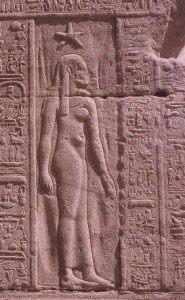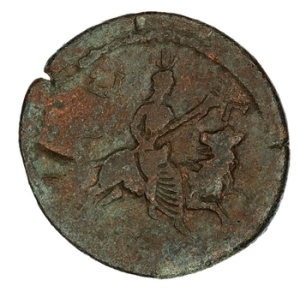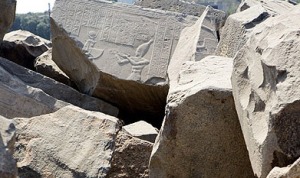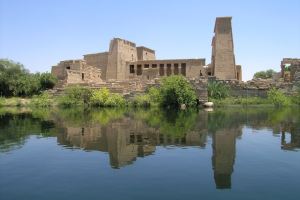If you’ve been following this blog, you know I write a lot about Isis as Lady of the Holy Star. In my area, Portland, Oregon, Her heliacal rising is a week from today.
I will be in my local high place (I am fortunate to have one near my home), awaiting Her reappearance with offerings in hand at 4:30 in the morning. I will watch as the Mystery unfolds and the Goddess emerges once more from the Underworld into the dawning light.
But for now, I watch the morning skies in anticipation of the pre-dawn reappearance of the beautiful and brilliant star of Isis, Sirius.
Thanks to the wonders of modern online astronomical calculators, we can know pretty precisely when the Fair Star of the Waters will rise before the sun in our area. (To use the calculator, just enter your email and the password: softtests. You will need to know the latitude and altitude of wherever you are observing Her rise. This info is easily google-able.)
If you want to know more about Sirius and Isis, here are some links to previous posts, all in one place:

The basic information on Isis and Her holy star and why it is called the “dog star”.
Meditations on Isis and Her Mother during this time of waiting.
The experience of my sister priestess and me one year as we watched Her rise.
About the symbol of the star in Egyptian spirituality and being “joined” to yours.
And a ritual for beginning the process of “being joined to your star.”

The rise of the Star of Isis was important in ancient Egypt for it marked coming of the fertilizing Nile Inundation and the day of the New Year. It was also the end of the epigominal days, those days out of time when the the Cairo Calendar tells us that the birthdays of Osiris, Horus the Elder, Set, Isis, and Nephthys were celebrated.
Thus, if you wish to celebrate the Birth of Isis, it is two days before New Year’s Day.
There are a number of options for choosing our New Year’s Day.
For instance, perhaps you’ve seen a date of July 19th given for the rising of Sirius? This comes from a 1904 calculation by Eduard Meyer, who was the first modern person to have noticed ancient Egypt’s Sothic Cycle.

You may recall that the Sothic Cycle is a period of 1,461 ancient Egyptian years during which the 365-day Egyptian year, which is one quarter-day too short, loses enough time so that the Egyptian New Year, once again coincides with the rise of Sirius.
Meyer was trying to calculate the date of the star’s rising from the ancient Egyptian calendar and translate it to the modern Julian so that the reigns of the pharaohs could be more accurately dated. The Sirius rising date he came up with was July 19—but that would have been for 140-142 CE.
You may certainly use that date if you prefer a firm date for planning your celebrations. That would make New Year on July 19th and Isis’ birthday on July 17th.
Personally, I like to use the date when Isis’ star may actually be seen in the morning skies in my area. You can use the calculator link above to find out when She rises in your area.

Another option might be to use the modern rising time at either of Isis’ major sacred temple sites in Egypt.
At Her Lower Egypt temple of Isiopolis in the delta, that was on August 8th this year.

At Her Upper Egypt temple of Philae/Agilika, that was on August 2rd.
So you can see that latitude makes a great deal of difference as to when the rising of the Goddess’ star may be actually observed.
If you wish to join me in celebration of Her rising, you’ll need to be at your observation point about an hour before sunrise in order to see Her. We may chant Her name—Iset-Sopdet, Isis-Sothis—as She rises. We may offer Her milk and lotuses. Or we may watch in beautiful silence as She comes, She comes.




